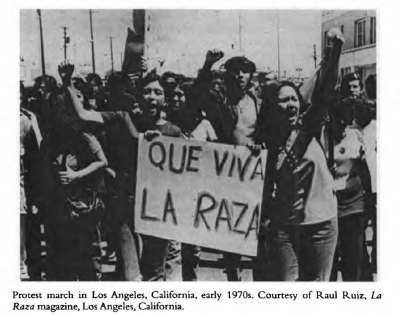Have you ever heard “Viva la raza!” shouted at a family gathering, protest, or even in a song, and wondered what it truly means? I remember feeling confused too when my cousin yelled it at our school’s Latino Heritage Month assembly—was it about race in a negative way? Should I be proud? The truth is, this powerful phrase carries layers of history and identity that many young Latinos (myself included!) need to unpack. Let’s clear the fog together: we’ll explore its translation, why it became a rallying cry, and how teens today navigate its meaning in our multicultural world.
Viva La Raza Translation and Literal Meaning

Viva la raza translates literally to “Long live the race” in English. But la raza meaning isn’t as straightforward as dictionary definitions suggest. In Spanish, “viva” is an exclamation like “hurrah!” or “long live,” while “la raza” means “the race.” Yet here’s where it gets interesting: unlike English, Spanish often uses “raza” to describe ethnic unity or cultural lineage—not biological race. Think of how your family might say “our people” when cheering for a community event. For example:
- When shouted at a dance festival: “Viva la raza!” = “Long live our heritage!”
- On a protest sign: “Viva la raza!” = “Power to our community!”
This tiny phrase packs different meanings depending on whether you’re in Mexico City, Los Angeles, or Santo Domingo. My abuela in San Antonio always explained it as “celebrating how we came together as one people,” which feels warmer than a cold translation. Remember: context is key when translating viva la raza!
Historical Origins of Viva La Raza
The Chicano Movement adopted “viva la raza” as a unifying slogan during the 1960s civil rights struggles. But its roots stretch much deeper. Picture Mexico right after the Mexican Revolution—a country rebuilding its identity. Philosophers like José Vasconcelos argued that Latin America’s strength came from blending Indigenous, Spanish, African, and Asian ancestries into something new. Fast-forward to the U.S. in the 1960s: Mexican-American youth fighting for fair wages and against discrimination latched onto this idea. They’d hear organizers like Bert Corona shout “viva la causa, viva la raza, y viva la unidad!” (long live the cause, the people, and unity!) at rallies documented in the Los Angeles Times. Suddenly, “viva la raza” wasn’t just a phrase—it was armor for your identity when society tried to make you feel small.
La Raza: Interpreting the Term
La raza refers to the shared cultural and ancestral roots across Latin America. This concept blew up thanks to Vasconcelos’ 1925 book La Raza Cósmica (la raza cósmica), which imagined a “cosmic race” emerging from Latin America’s mix of heritages. He wasn’t talking about bloodlines—he meant mestizo (mixed Indigenous/European), Afro-Latino, and even hidden histories like Sephardic Jews who fled the Spanish Inquisition to settle in places like Northern New Mexico. Some communities celebrate Día de la Raza (similar to Columbus Day but focused on unity), while critics argue it overlooks ongoing racism against Afro-Latinos or Indigenous groups. As my Tía Rosa puts it: “It’s about finding common ground, but we can’t ignore that our ground has cracks.”
Key Figures and Movements
César Chávez popularized “viva la raza” through the United Farm Workers union. During grape boycotts in the 1970s, signs reading “Viva la Raza!” popped up next to “¡Sí, se puede!” as farmworkers marched for fair pay. This wasn’t just about jobs—it was reclaiming pride when californios (early Mexican settlers) had been marginalized for generations. Artists amplified the message too: Frida Kahlo’s paintings celebrated Indigenous roots, while Chicano poets wove “la raza” into verses like cultural lifelines. Even today, you’ll spot it in Beyoncé’s “Brown Skin Girl” lyrics or murals in L.A.’s Boyle Heights. It’s proof that when elders like Chávez turned frustration into fuel, they gifted us vocabulary for resilience.
Contemporary Debate and Relevance
Young Latino activists question if “viva la raza” still empowers or unintentionally excludes. On one side, it’s a battle cry against policies targeting immigrants—like when crowds chanted it during President Donald Trump’s era. On the other, some argue “raza” feels outdated since Latino identities aren’t monolithic (a Puerto Rican teen in NYC might connect differently than a Salvadoran in Houston). Organizations like UnidosUS (which changed from “National Council of La Raza” in 2017) show how language evolves to embrace diversity. My friend Mateo, 14, told me: “I love ‘viva la raza’ at quinceañeras, but I also say ‘Latinx power’ online to include my non-binary cousins.” There’s no wrong answer—it’s about choosing words that make *everyone* feel seen.
| Question | Answer |
|---|---|
| What does “viva la raza” mean in Spanish? | Viva la raza literally means “long live the race” in Spanish, but culturally it signals solidarity among Latino communities—like shouting “Go team!” for your heritage. |
| Is “viva la raza” racist? | Context matters. When used to exclude other groups, yes—it becomes harmful. But in the Chicano Movement, it reclaimed dignity for marginalized people. Think of it like “Black Power”: intent defines impact. |
| Why is “la raza” controversial? | Some feel it oversimplifies Latino diversity or ignores internal racism. Others worry it echoes old Spanish caste systems. As scholar José Angel Hernández notes, “It’s a compass, not a cage—we get to define its direction.” |
Why This Phrase Still Matters to You
Modern Latino youth fuse “viva la raza” with new movements like Afro-Latino activism. Whether you say it while dancing to Bad Bunny, designing social media graphics, or comforting a friend facing discrimination, this phrase is your invitation to own your story. It’s not about a “pure” race—it’s about the messy, beautiful truth that we’re all woven from multiple threads. Last semester, my history class created art murals using “viva la raza” as a theme, and wow—the mix of Indigenous symbols, abuela’s recipes, and Spanglish poetry blew our minds. So next time you hear “viva la raza,” remember: it’s a conversation starter, not a final answer. Your voice? That’s the next chapter.

